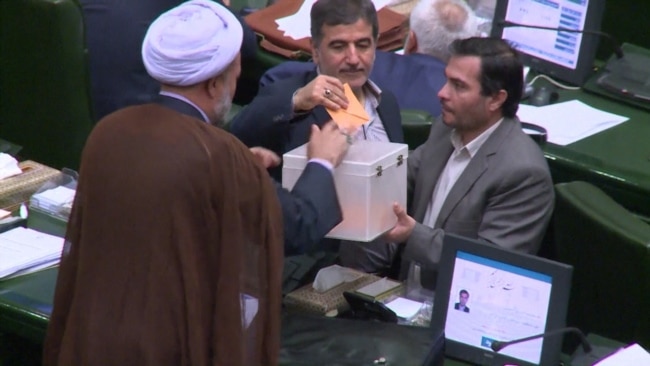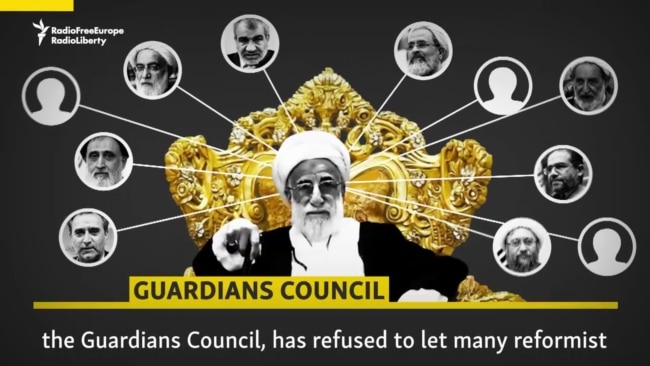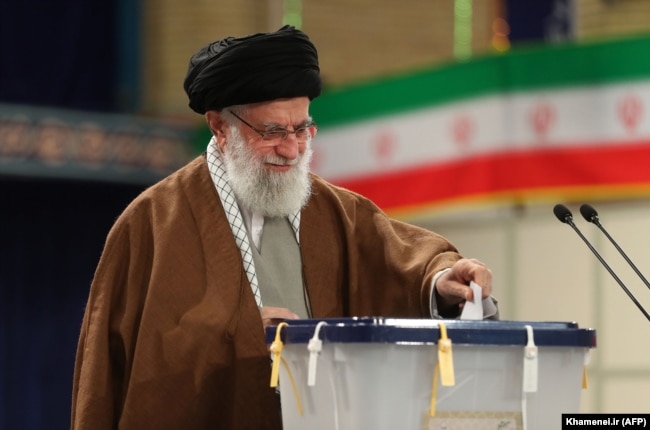Conservatives appeared to be ahead as ballots were being counted in Iran’s February 21 parliamentary elections.
The poll was certain to favor conservative candidates following the pre-vote disqualification of thousands of reformists or relative moderates.
Initial results were expected on February 22 after authorities three times extended voting by a total of five hours to allow more people to cast ballots. Final results are expected a day later.
All of those standing for election were prescreened by a group of hard-line Islamic clerics who disqualified some 9,000 potential candidates.

The National Elections Committee said it had counted over 1 million votes in 41 constituencies across Iran. Votes were still being tallied in 167 other constituencies, including in larger provinces like Tehran.
Esmail Musavi, a spokesman for the committee, said electoral authorities would “try to publish the final figures tonight, and if that task takes too long, tomorrow.”
‘Sweeping Victory’ Predicted
With official figures yet to be released, media affiliated with conservatives and hard-liners projected a sweeping victory for their candidates.
An unofficial tally published by the hard-line Fars news agency, which is affiliated with the powerful Islamic Revolutionary Guards Corps (IRGC), claimed the outcome from 183 out of the 290 seats in parliament had been decided.
Fars claimed conservative candidates would win 135 seats, while reformists were set to secure 20 seats and independents 28.
In the 2016 vote, a bloc of reformists and moderate conservatives won 41 percent of the 290 parliamentary seats. Hard-liners won 29 percent and independents took 28 percent.
Because of the disqualifications, turnout was expected to be lighter than usual despite pleas by Iranian leaders for citizens to head to the polls.

EMBED SHARE
Everything You Need To Know About Iran’s Parliamentary Elections
Official figures were not immediately released, but Fars said turnout was estimated at 40 percent nationwide and 30 percent in Tehran.
State TV reported very high turnout early in the day in Tehran and other provinces, but the German dpa news agency quoted witnesses in the capital as saying most polling stations were empty.
Iranian authorities had predicted a turnout of about 50 percent, compared with 62 percent in the 2016 vote.
Supreme Leader Ayatollah Ali Khamenei cast his ballot at a mosque near his Tehran office shortly after polls opened.
“Anyone who cares about Iran’s national interests should participate in the election,” he said in televised remarks.

Conservative clerics in the Guardians Council cleared a total of 7,148 candidacies.
Ninety members of Iran’s outgoing parliament were among those who were rejected. Many were moderates or reformist lawmakers who support engagement with the West.
U.S. Secretary of State Mike Pompeo criticized the election as a “sham” and a vote that “is not free or fair.” Washington on February 20 imposed sanctions on five members of Iran’s Guardians Council and its Elections Supervision Committee, accusing them of rigging the election.
President Hassan Rohani, who initially criticized the disqualification of so many moderate would-be candidates, said Iranians could stage what he called another “victory” by voting in large numbers.
“Our enemies will be disappointed more than before,” Rohani said, after casting his ballot.
Officials initially extended voting for two hours due to what state television described as a “rush of voters” during the final hours of scheduled voting. Balloting was then prolonged again for a further two hours and then a third time for one additional hour.
The elections were seen as a test of the popularity of Iran’s conservative clerical establishment.
 Shabtabnews In this dark night, I have lost my way – Arise from a corner, oh you the star of guidance.
Shabtabnews In this dark night, I have lost my way – Arise from a corner, oh you the star of guidance.



